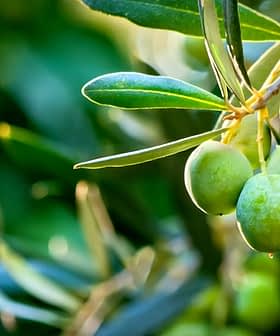
John Sessler (left), chairman of the American Olive Oil Association, at the United States International Trade Commission in Washington last December
It was a year of “unprecedented activity” for the North American Olive Oil Association (NAOOA), according to its chairman, John Sessler. In the trade group’s 2012 annual report distributed last week, Sessler cited four key developments in the olive oil industry and NAOOA’s involvement.
Marketing order
Domestic olive oil producers discussed proposing a marketing order for olive oil. Sessler said the NAOOA pointed out to the industry, Congress and government officials that a marketing order could potentially be applied not only to domestic but also to imported oil and that this would cause “huge trade disruptions.”
USITC Investigation
Congress requested that the U.S. International Trade Commission (USITC) investigate trade issues that affect the domestic olive oil industry. Sessler noted that the USITC report is due in August and that Commission reports can sometimes spark calls for action, such as an “antidumping duty petition.”
Although the NAOOA sees this as an unlikely outcome, it participated in the Commission hearings to ensure that the “USITC had as much information as possible to get a full picture of the industry,” said Eryn Balch, NAOOA’s executive vice president.
Pesticide residues
Only three pesticides and their residue tolerance levels for olive oil have been set by the U.S. Environmental Protection Agency (EPA), while the European Union has set “very strict tolerances for pesticide residues” for a much broader spectrum of pesticides, said Balch. When an EU country ships oil to the U.S., the oil may contain pesticide residues that are “well below those thresholds,” however if the pesticides are not one of the three on the EPA list, the Food and Drug Administration (FDA), which enforces EPA standards, can hold up the shipment.
Olive Oil Times recently reported that 98 containers of olive oil shipped from Italy were detained by the FDA for traces of chlorpyrifos. The pesticide levels met EU standards but since EPA standards are silent on chlorpyrifos, the oil is considered adulterated until proven otherwise.
The NAOOA believes that this is an “issue that shows the need for harmonized standards on globally traded products,” explained Balch.
Quality Control
The NAOOA conducts a quality control program in which random samples of oils are drawn from store shelves and sent to International Olive Council (IOC) labs for testing. The program revealed some labeling issues that have been brought to the attention of producers for corrective action, noted Sessler. In a case that is ongoing, the NAOOA filed a lawsuit against an olive oil maker for selling olive pomace oil as “100 percent olive oil.”








